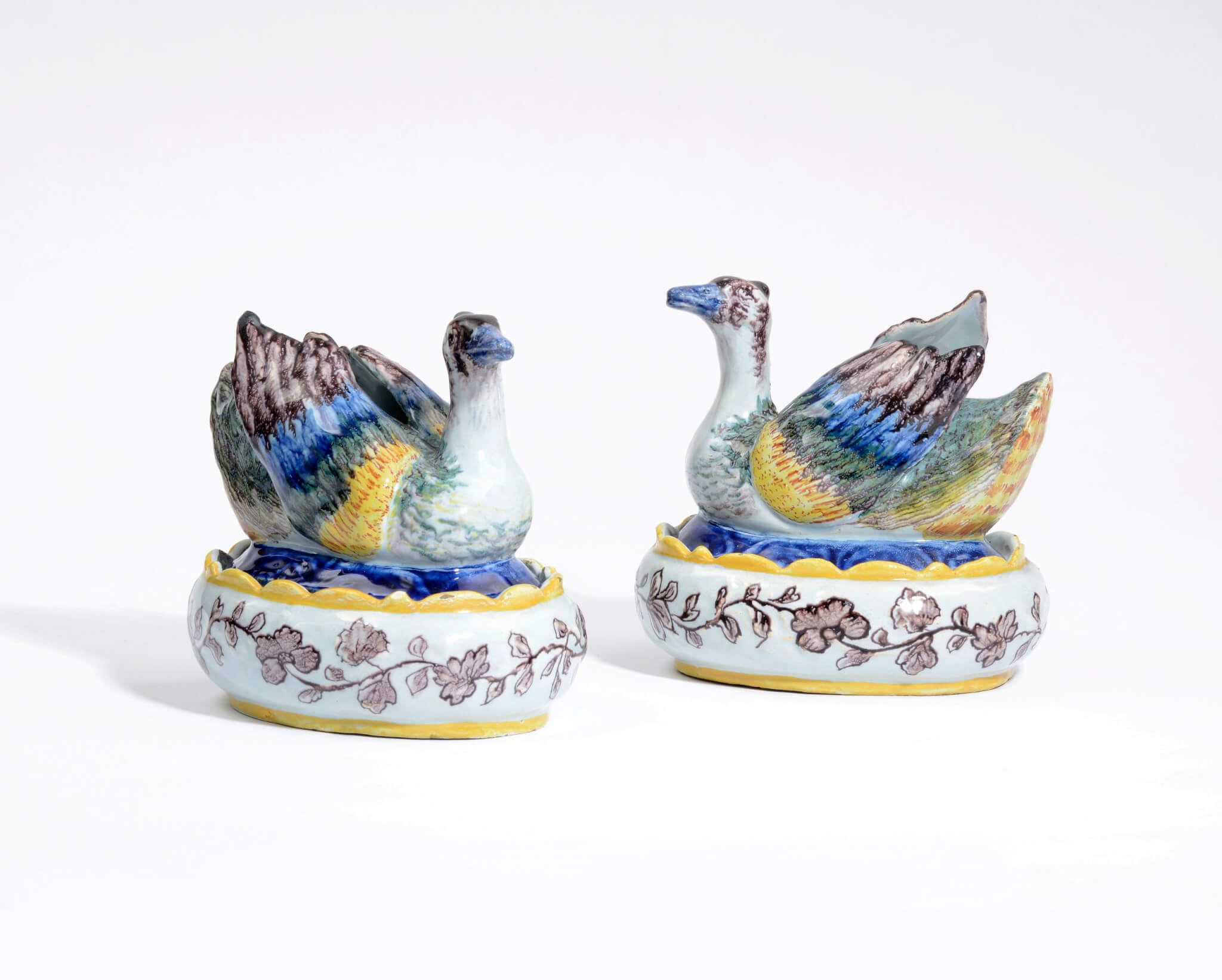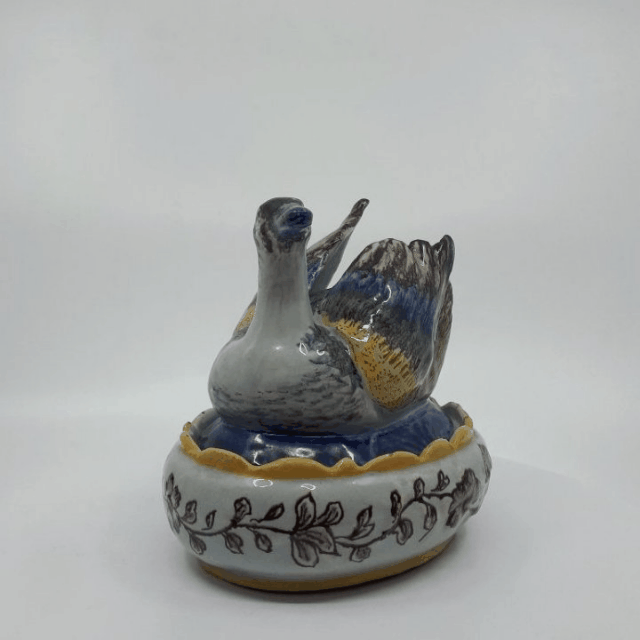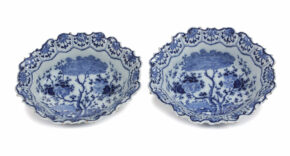
[popup_trigger id=”13756″ tag=”span”]![]() [/popup_trigger]
[/popup_trigger]
Images on this website are licensed under a
Creative Commons Attribution-NoDerivs 3.0 Unported License.

OBJECT
D2027. Pair of Polychrome Duck Tureens and Covers
Delft, circa 1760
Marked with an axe in blue for De Porceleyne Byl (The Porcelain Axe) factory
Each cover modeled as a swimming duck with slightly extended wings and upswept tail in manganese, blue, green and yellow, and a manganese head with a blue bill, on a watery blue mound above an oval tureen with a yellow scalloped and barbed rim and decorated in manganese with a continuous meandering vine bearing blossoms and leaves.
Dimensions
Heights: 11.8 cm. (4.6 in.)
Provenance
The F. Bodenheim Collection, Amsterdam;
The Guepin Collection, Eindhoven;
The Collection of Dr. J.P.H. Peper, Laren;
Aronson Antiquairs, Amsterdam, 2006;
The Van der Vorm Collection, The Netherlands
Note
At the end of the seventeenth century, large tureens in silver, and later ceramic, were the centerpieces for grand services. However, smaller tureens in the form of animals and birds predate this practice. Early in the seventeenth century, these small, naturalistic forms acted as the serving ware for pies on festive occasions. The fancy and decorative pastry forms were even embellished with plumes and bird heads, which can be seen in period paintings.
By the middle of the eighteenth century, naturalism reigned in ceramics with the increased interest in botanical and zoological subjects. The ‘trompe l’oeil’ style was at its zenith in the faience of Strasbourg in France and the porcelain of Meissen in Germany and Chelsea in England. All of these centers of production served as the inspiration and models for Delft potters, who created their own unique versions of both domestic and exotic animals for their eager clientele.
Similar examples
Although birds and fowl were beloved subjects of inspiration for the Delft potters and many different forms were produced, no other pair identical in model to these seems to be published. A singular duck tureen and cover, marked AP for Anthonij Pennis, is in a Belgian private collection.








